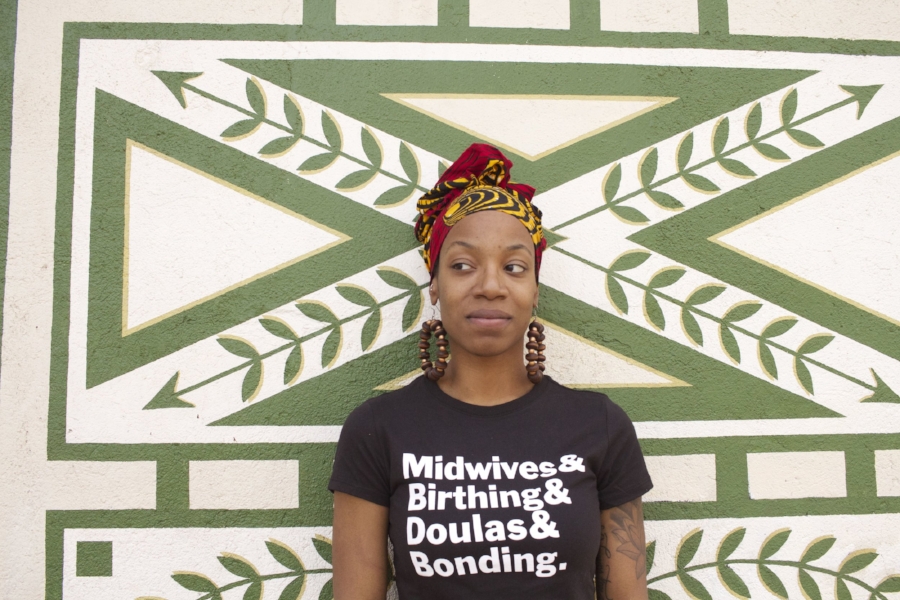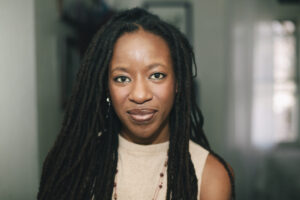Uju Asika is a multi award-nominated blogger, screenwriter and creative consultant. She is the author of Bringing Up Race: How to Raise a Kind Child in a Prejudiced World, a book she wrote for people of all ethnicities who care about creating a safer, kinder, more inclusive society for every human.
The book explores how to talk to children of all ages about race and racism, covering issues such as racial bullying, colorism, hair discrimination, name prejudice and microaggressions. Her goal is to spark more open and transformative conversations about race in our homes, schools and communities. Born in Nigeria, Uju grew up in Britain and has lived and worked in New York and Lagos. She lives in London with her husband and two sons.
Here is an excerpt from her book, which you can purchase on Amazon, Bookshop, or wherever you love to get your books.

When We Start Seeing Race
Do you play peekaboo with babies? I do it all the time—on buses, in the supermarket, at the doctor’s office. It’s such a universal icebreaker. I love how making your face vanish and reappear can amuse and surprise infants from Alaska to Zanzibar.
What is it about peekaboo that tickles them so? Apparently, it’s all about their developing sense of how the world fits together. Swiss psychologist Jean Piaget called it object permanence, the ability to understand that even if you can’t see something, it still exists. Babies can take up to two years to understand this concept fully. (My kids still haven’t worked this out, judging by the state of their laundry baskets.)
By nine months old … babies begin to react to ethnic differences.
Another theory about peekaboo is that it tricks young kids into thinking they are invisible. Researchers at the University of Cambridge set up an exercise with three- and four-year-olds, giving them mirrored goggles that hid their eyes yet let them see. The kids who believed nobody could see their eyes also imagined nobody could see them at all.
Think back and you might remember this from your own childhood. Hands over your eyes like an invisibility cloak. Isn’t it sweet that babies can get this from a game of peekaboo? I’ve noticed with babies of another ethnicity, sometimes I work harder to connect. It’s as if the baby spends a little longer on my face, taking in all my features, before they’re ready to offer up a smile. Peekaboo, I see you. Can you see me too?
This is not all in my head. A study from the Department of Psychology at the University of Sheffield tested babies at three months old to see if they could tell different ethnicities apart. By showing the babies images of people from various racial groups, researchers found the babies were more drawn to faces that matched their own race. This was in contrast to an earlier test with newborns, who showed no preference for any ethnicity.
By nine months old (prime time for peekaboo), babies begin to react to ethnic differences. That’s around the age when they start developing “stranger anxiety,” and their hearts actually beat faster when they come into contact with people they don’t recognize. If that stranger has markedly different skin, hair, and features from Mom or Dad, their little hearts might thump harder with apprehension.
Wait a minute. Does this mean we’re born racist? Not at all. The research simply shows we have an instinct for familiarity. It’s a primal impulse, feeling safer among your clan, that starts as soon as you form attachments to your first caregivers.
You see, up until a few months of age, babies don’t realize they are separate beings from their mothers. After all, their limited existence so far has taught them you breathe, therefore I breathe. You feed, therefore I feed. I suck, therefore we are. But as the weeks and months go by, babies start to form their own identities, and that feeling of separation kicks in. It’s an unsettling time, realizing you don’t actually control that person you thought was an extension of yourself.
You have to be proactive, because whether you like it or not, kids are learning about race all the time from the world around them.
Now let’s say the face you see leaning down over your crib every morning has deep-brown skin. That is all you know of the world around you. One day, here comes another living, breathing being with creamy pink skin. Why wouldn’t you stare, maybe shrink back, or even bawl for help?

Making Friends With Difference
Let me clarify again that nobody is born a bigot. Young babies don’t react to racial difference when they first notice it. The “uh-oh, who dis?” shift happens around nine months. A team at the University of Massachusetts Amherst studied 48 white babies who’d had little or zero contact with Black people. In a series of experiments monitoring brain activity, they found babies at five months were easily able to tell any face apart, irrespective of race.
But by nine months, the babies were better at being able to differentiate between two white faces. Also, when gauging whether facial expressions were happy or sad, the five-month-old babies processed information for all racial groups in the same area of their brain. But the nine-month-olds’ brains switched the processing of this information from one brain region to another and again were more accurate with their own race.
Psychology researcher Lisa Scott, who was part of the study group, compared the results to how children learn language. In multilingual households, babies can discriminate sounds in multiple languages but lose this ability if they grow up in single-language environments. Similarly, she explained, infants exposed to a wide mix of people of different ethnicities will maintain the ability to distinguish those people, regardless of race. In other words, diversity matters. Exposing your kids to other ethnic groups from an early age makes a difference.
Interestingly, another study on white, Asian, and mixed-heritage (Asian and white) infants raised in a multicultural environment (Los Angeles) showed none of the babies had any clear preference for either own-race or other-race faces. The researchers surmised that, being raised in LA, the babies had become accustomed to a more diverse range of faces. Also, the mixed-heritage babies were seen to use more advanced facial scanning patterns, which the researchers put down to regular exposure from birth to parents of different races.
Babies aren’t born to hate; they’re born inquisitive. It’s good to mix up a little more so that our naturally curious infants get to explore, discover, learn, and familiarize themselves with all types of people. Think of curiosity as a muscle. Let it grow and we can raise children who are kinder, more open, and more sensitive to other cultures. Everybody gets stronger. Let it wane, however, and it can shrink into apathy, fear, and ignorance.
If you live in an area where everybody looks the same, maybe it’s time to step out of your comfort zone. Diversify the media you consume, the shows you watch, the books you read. Be intentional about whom you hang with and whom your kids play with too. You have to be proactive, because whether you like it or not, kids are learning about race all the time from the world around them.
Excerpt from Bringing Up Race: How to Raise a Kind Child in a Prejudiced World (Sourcebooks) by Uju Asika. Available on Amazon, Bookshop, and other good bookstores.

















